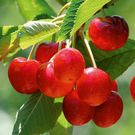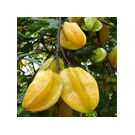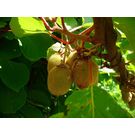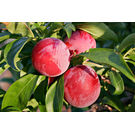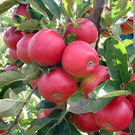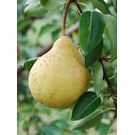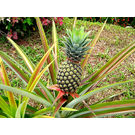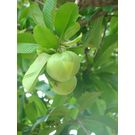Kinnow Fruit Plant

Description
Citrus is the leading tree fruit crop of the world. The genus citrus includes more than 162 species belonging to the Order Geraniales family Rutaceae and sub family Aurantoideae. Mandarin (Citrus reticulata Blanco.) Sweet orange (C. sinensis (L) Osbeck), Grapefruit (C. paradisi Macf.), Pummelo (C. grandis Osbeck), Acid Lime (C. aurantifolia Christm) and Lemon (C. limon (L) Burn F.) etc. are commercially grown in the world. Citrus is mainly grown in United States, Brazil, Mexico, India and Argentina.
After Mexico, India is the leading producer of citrus fruits with an area of 763 lakh hectares with production of 599 lakh tones annually. In India, it ranks third in production after banana and mango. Among citrus crops, mandarin orange (Kinnow mandarin, Nagpur, Khasi, Darjling) covers largest area followed by sweet orange (Musambi, Pineapple, Blood Red and Jaffa) and Acid lime. Among these, Kinnow mandarin bears highest place in production, productivity, juice content and fruit quality. In India, Kinnow is being grown in Punjab, Rajasthan, Haryana, Himachal Pradesh, Jammu & Kashmir and Utter Pradesh.
Plantation
The planting should be done on the onset of monsoon from the middle of July up to end of September. The plantation of the wind breaks such as Shisham, Mulberry seeding, Mango, Jamun, Guava and Aonla etc. on the boundaries of orchard in double row helps to minimize the effect of strong winds..
Tree spacing (High density)
- This move towards high planting will be due to:
- reduced water availability
- reduced land/person.
- high cost of drip establishment.
- higher yield per unit area with efficient use of nutrients.
- desire for earlier economic returns on investments
- need for increased management efficiency.
Concept of higher density:
- Changes which effect return from citrus production include:
- Abundant, unrestricted water supply is no longer available. Improved water use efficiency can be achieved with higher density planting and well designed low volume irrigation system.
- A limited supply of suitable land for citrus, land values, citrus development and production costs, along with increased foreign competition, periodically depressing fruit prices, makes maximum production per hectare and economic necessity.
- Reduced utilization of energy in the form of fuel and agro-chemicals makes more efficient application and utilization in term of spray interception by tree canopies and fertilizer update by root system increasingly important
Irrigation
Method of irrigation:
- Basin system: Young plant to 7 –8 years
- Flood irrigation: In grown up and old orchard
- Drip irrigation : due to scarcity of water
Care should be taken that irrigation water does not come in direct contact with trunks to avoid susceptibility to bark diseases. This can be avoided by providing earth mound around the trunks of the trees well below the stock scion union
Mannuring and Fertilization
Pre-plant
Available organic manures should be applied and well incorporated into the soil before planting. This practice is widely adopted in many developing countries. Typically, a planting hole about 1metre in diameter and 1 metre deep is dug; compost, animal manure and green manure are mixed with the soil that has been dug out, and the mixture is then replaced in the hole before the tree is planted. Tree planting holes are not used in developed countries, because of scarcity of organic manure. On acid soils, limestone is usually added to the mixture for pH adjustment or, where organic manure is scarce, soil preparation consists simply of liming. On some alkaline soils in arid regions, pre-plant irrigation is often used to leach excess salts from the surface soil.Analysis of soil before planning to establish the orchard.
Pruning
The pruning of citrus-trees begins in the nursery. All branches that start within a few centimetres of the union are removed, leaving about half a metre of clean straight stem with a few well-placed branches. All unwanted branches are removed once a month during the first year after planting, and once in two to three months in subsequent years. The bearing trees require little or no pruning. After the crop is picked, the branches touching the ground should be cut close to the laterals so that no stubs are formed. All diseased injured and crossing branches, water-sprouts and dead wood should be removed periodically
You may also be interested in
Look for Similar Items by Category
- Home > Fruit Plants > Kinnow


